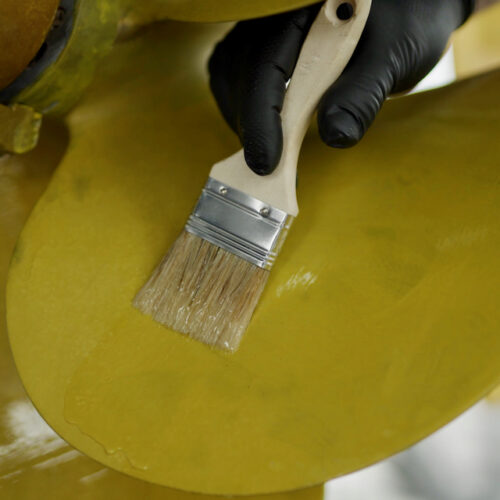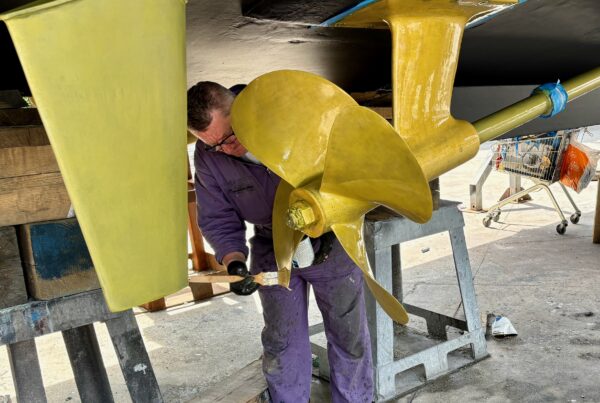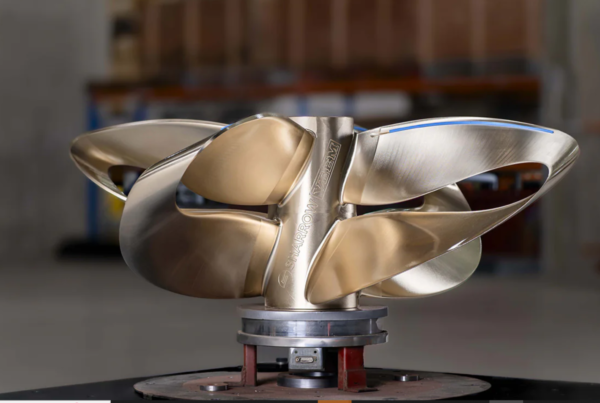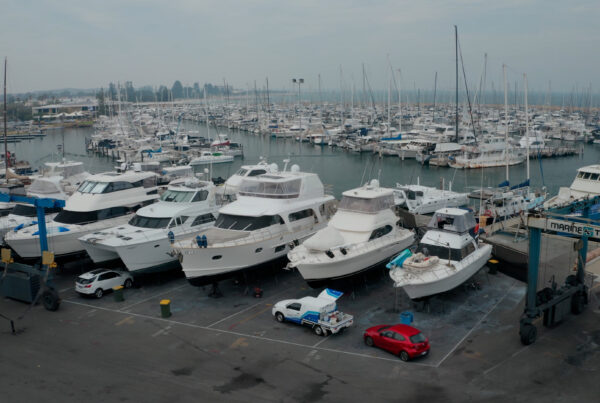They are the tell-tale signs that all boat owners dread – pitting, pinking or discolouration of the all-important propeller. This type of damage is called electrolysis, or electrolytic corrosion, and it is a common and potentially costly headache for boaties.
In many cases, they act too late to stop their running gear – that is, the propellers, shafts, struts and related parts on boats – from disintegrating over a period of weeks, months or years. Fortunately, there are some preventative actions that can be taken to reduce the likelihood of such a threat.
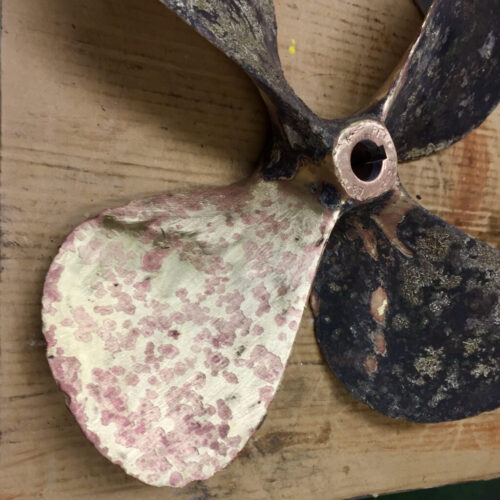
The calling card of electrolysis – Shown by this cleaned propeller blade showing copper spots due extensive de-zincification of bronze by electrolytic corrosion.
What causes electrolysis?
First up, it helps to understand the problem. Stray electrical currents are at the heart of electrolysis and they come from three key sources – your boat’s electrical components (poor installation of wiring), from other boats (often in busy marinas), or from the shore power connection (especially ground leads).
In an effort to earth itself, the current travels through seawater, which acts as a conductor, and through your boat before re-entering the water to try to find ground. During these stages, metal can be stripped off one surface and dissolve into the seawater, causing corrosion and jeopardizing the efficient and safe operation of your vessel.
Electrolysis has similarities to galvanic corrosion, which occurs when dissimilar metals that come into electrical contact with each other are reduced and oxidized. When these metals connect with each other through an electrolyte such as seawater, the electrons are free to flow from the more chemically active metal (an anode) via a conductive path (the seawater) to the less chemically active metal (a cathode). This can lead to corrosion of the surface of the reactive metal and delamination of any coatings on it.
The upshot in the case of propellers is that they can be ruined and require replacement.
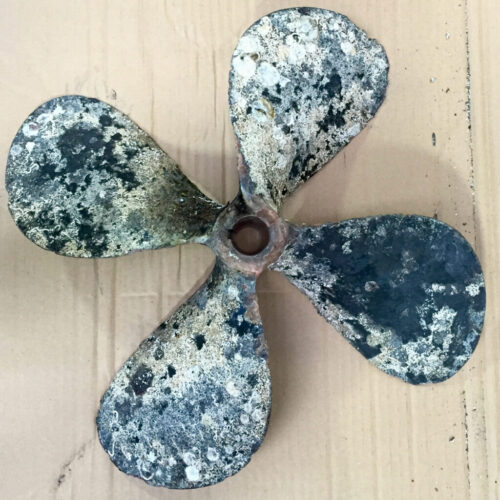
Propeller with black copper oxide on surface from electrolytic corrosion.
How do I fix it:
All the science aside. most boat owners want to know how to prevent or fix such corrosion.
Here are four steps to take:
1. Maintain your sacrificial anodes – these anodes are usually made from zinc and other easily corroded materials that are deliberately installed on boats to be ‘sacrificed’ to corrosion, leaving other metal parts of the boat relatively corrosion-free. This concept is known as ‘cathodic protection’. The anodes should be replaced before they are completely depleted to ensure they do their job. It is essential to install the correct type of anode on your boat. Overprotection can be just as bad, if not worse, for your propellers and running gear (we’ll have more on this topic in future blogs).
2. Attend to your boat’s wiring – wiring on your vessel should be regularly inspected to help prevent electrolytic corrosion. Keep in mind, though, that even if your boat’s electrical system is running perfectly, another boat with faulty wiring that is berthed nearby can cause electrolysis to occur.
3. Install a galvanic isolator – this is a crucial part of your boat’s electrical system and blocks low-voltage currents that enter your boat via the shore power earth wire.
4. Apply an appropriate protective coating – this, in essence, helps act as a shield for a metal prop from electrolytes and cuts the risk of corrosion.
The latter point is crucial. While sacrificial anodes often dominate discussions about ways to stop electrolysis, the use of a complementary protective coating system acts as another layer of defence. Such coatings can passivate metal and limit the ability of a propeller to conduct stray currents.
Modern foul release coatings are non-toxic and make surfaces too slippery for marine life such as barnacles to attach themselves to props and running gear. As such, they are an environmentally friendly alternative to traditional marine antifouling biocidal paint coatings that can threaten sea creatures.
Complementing such safe coatings with the right anodes and maintenance regimes can make a real difference in the fight against corrosion. As with any such technical process, it is wise to consult professionals with experience in this area. With their help, you will be able to protect your running gear from electrolysis – saving you money and your boat.
